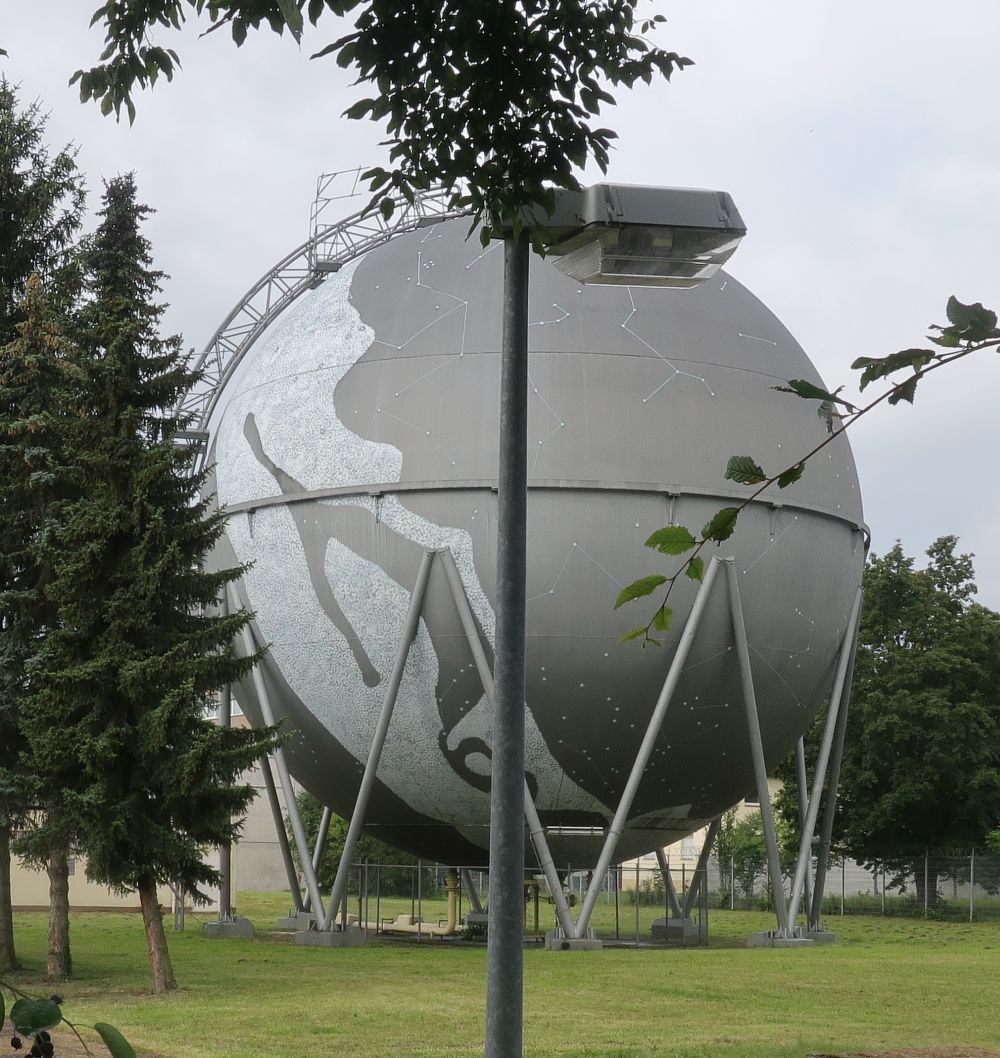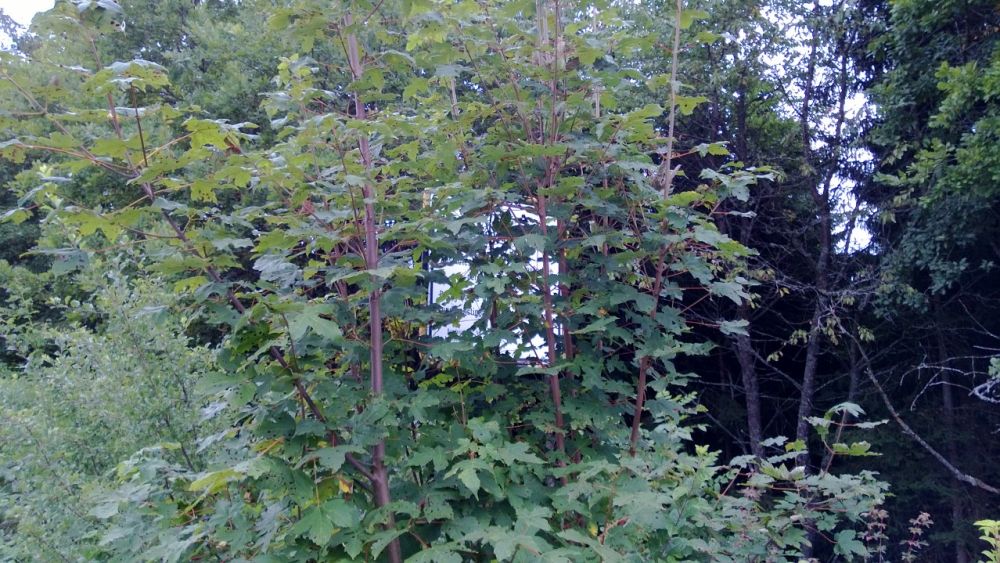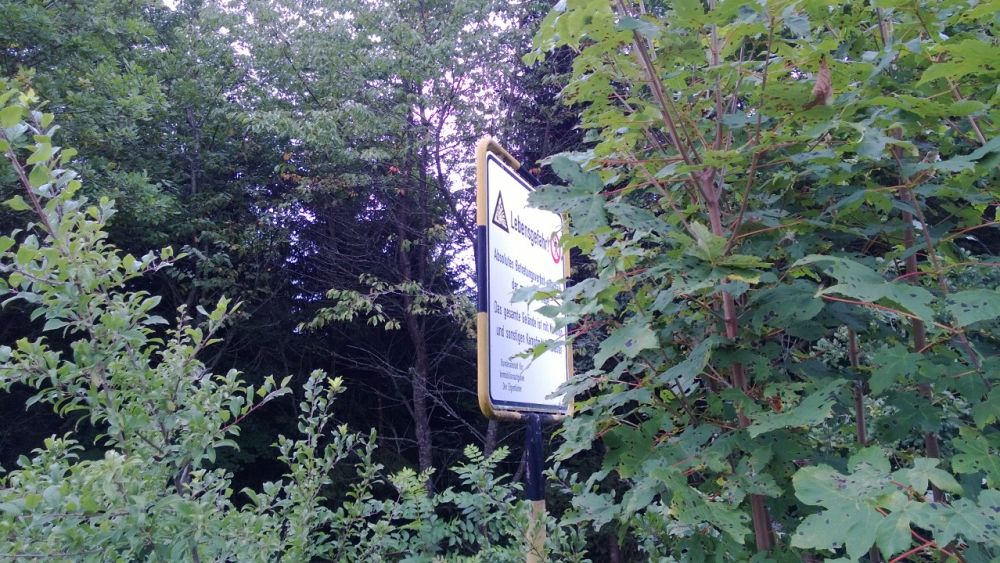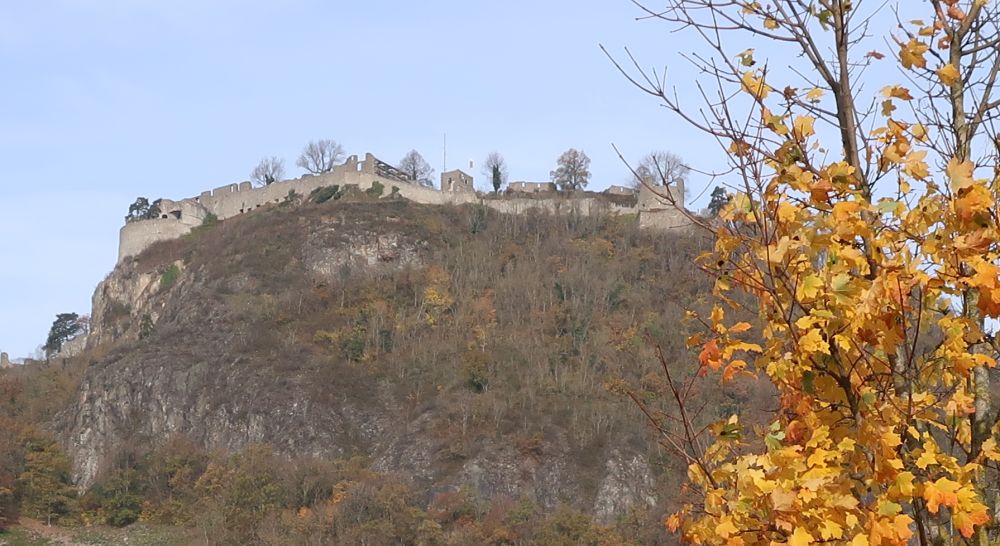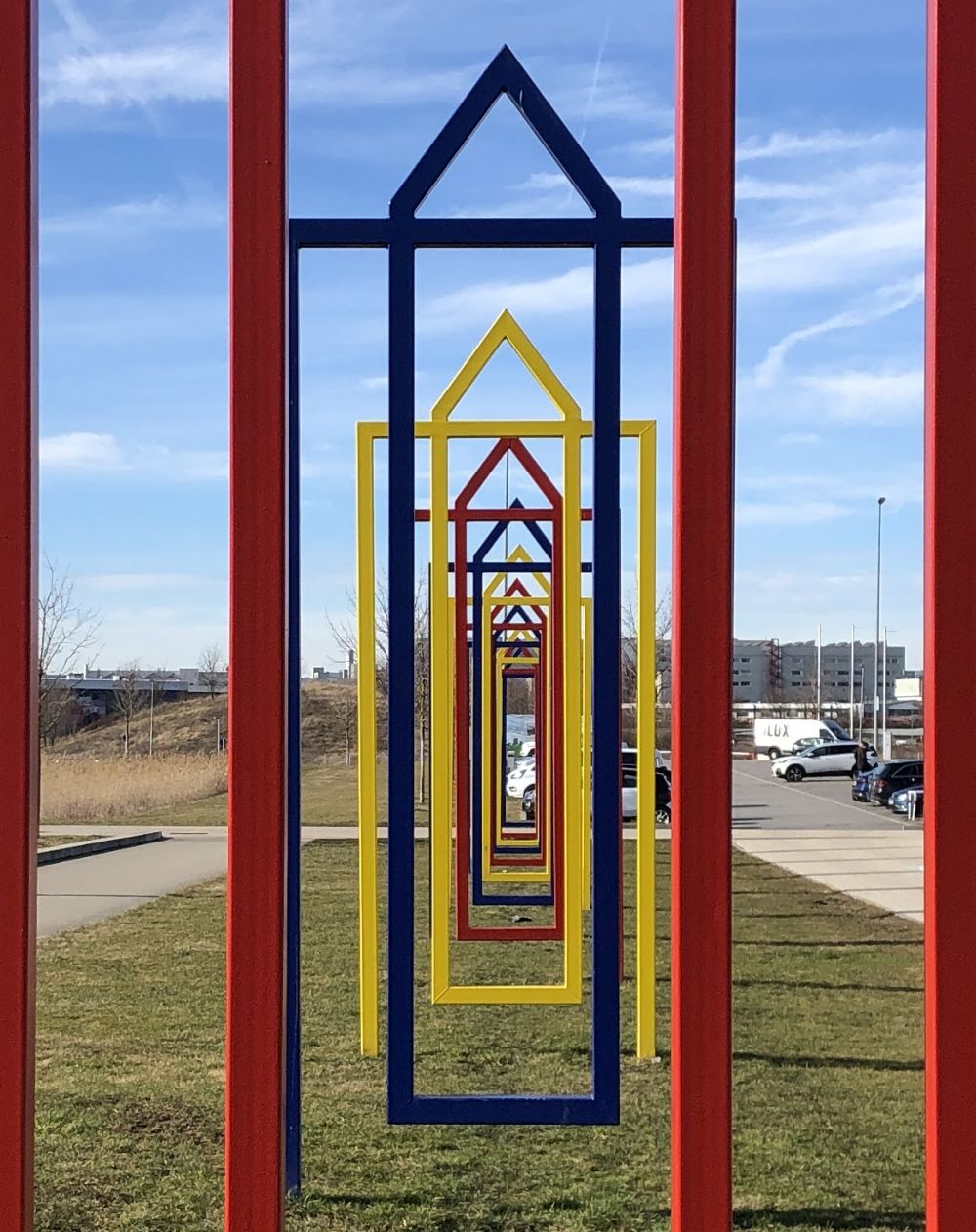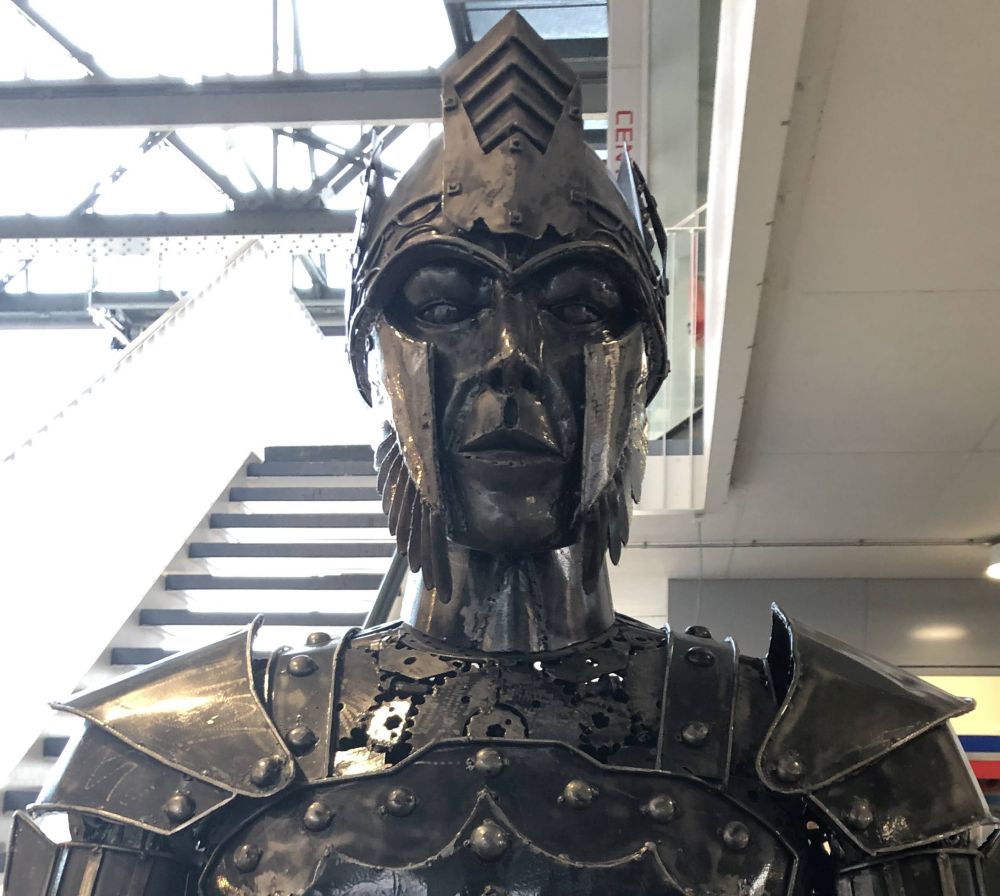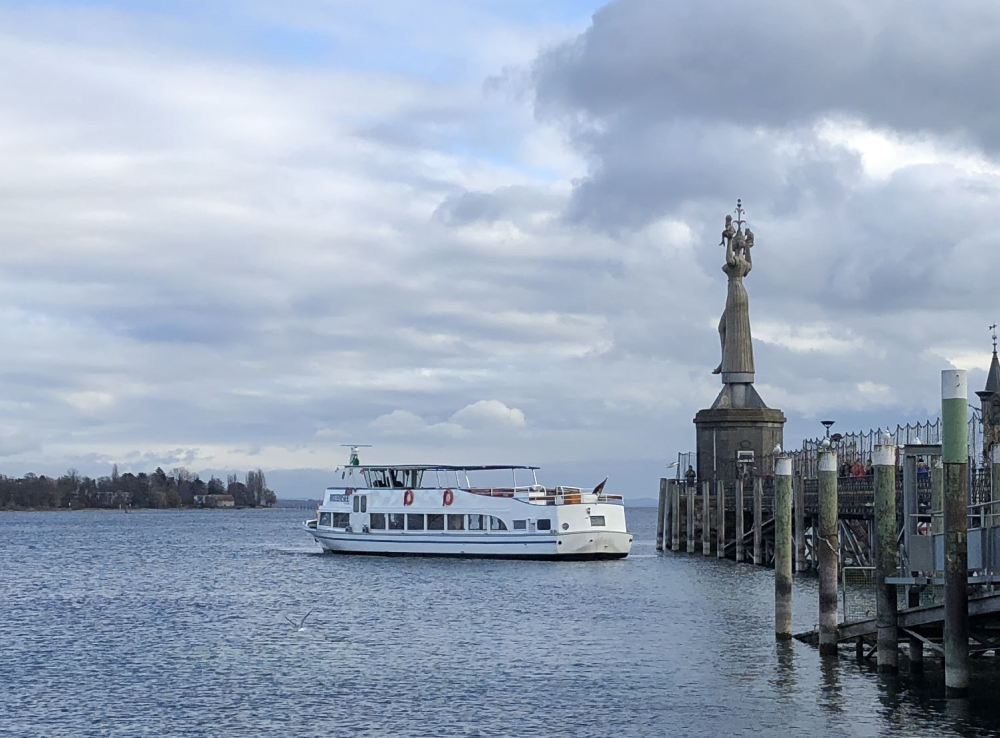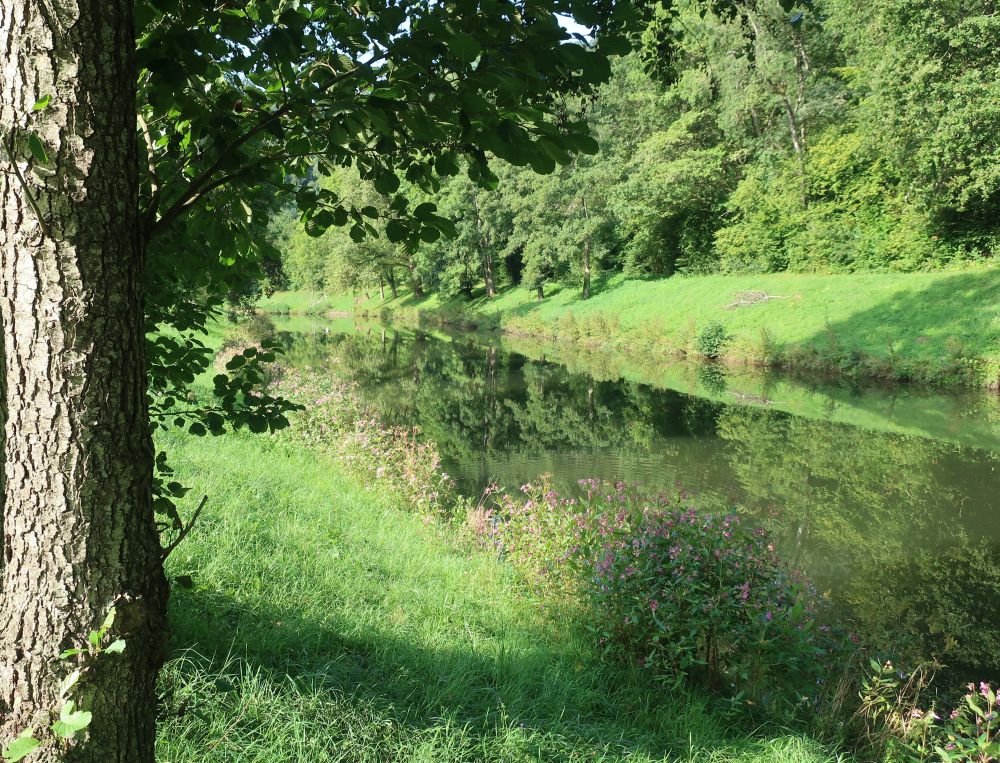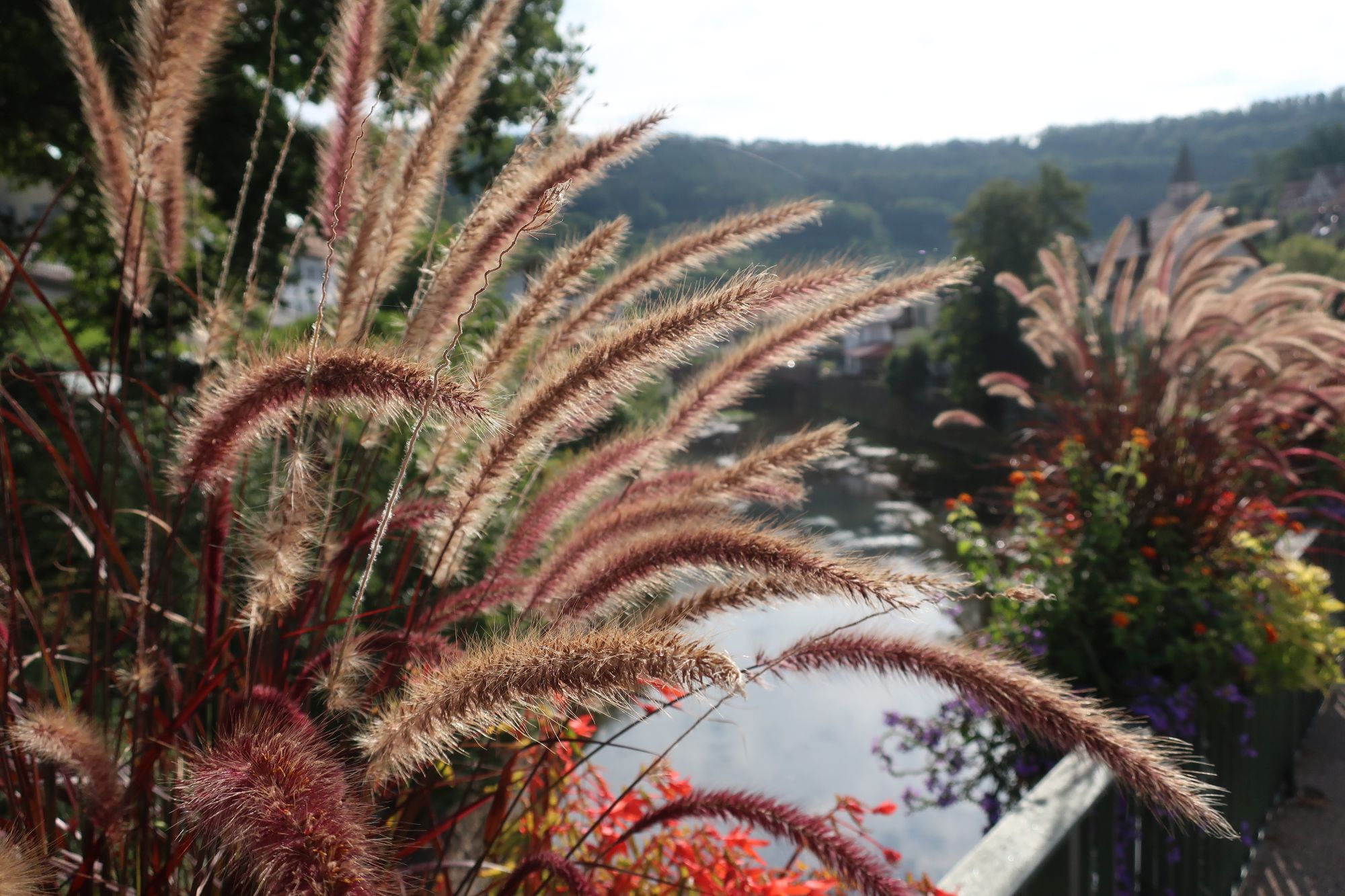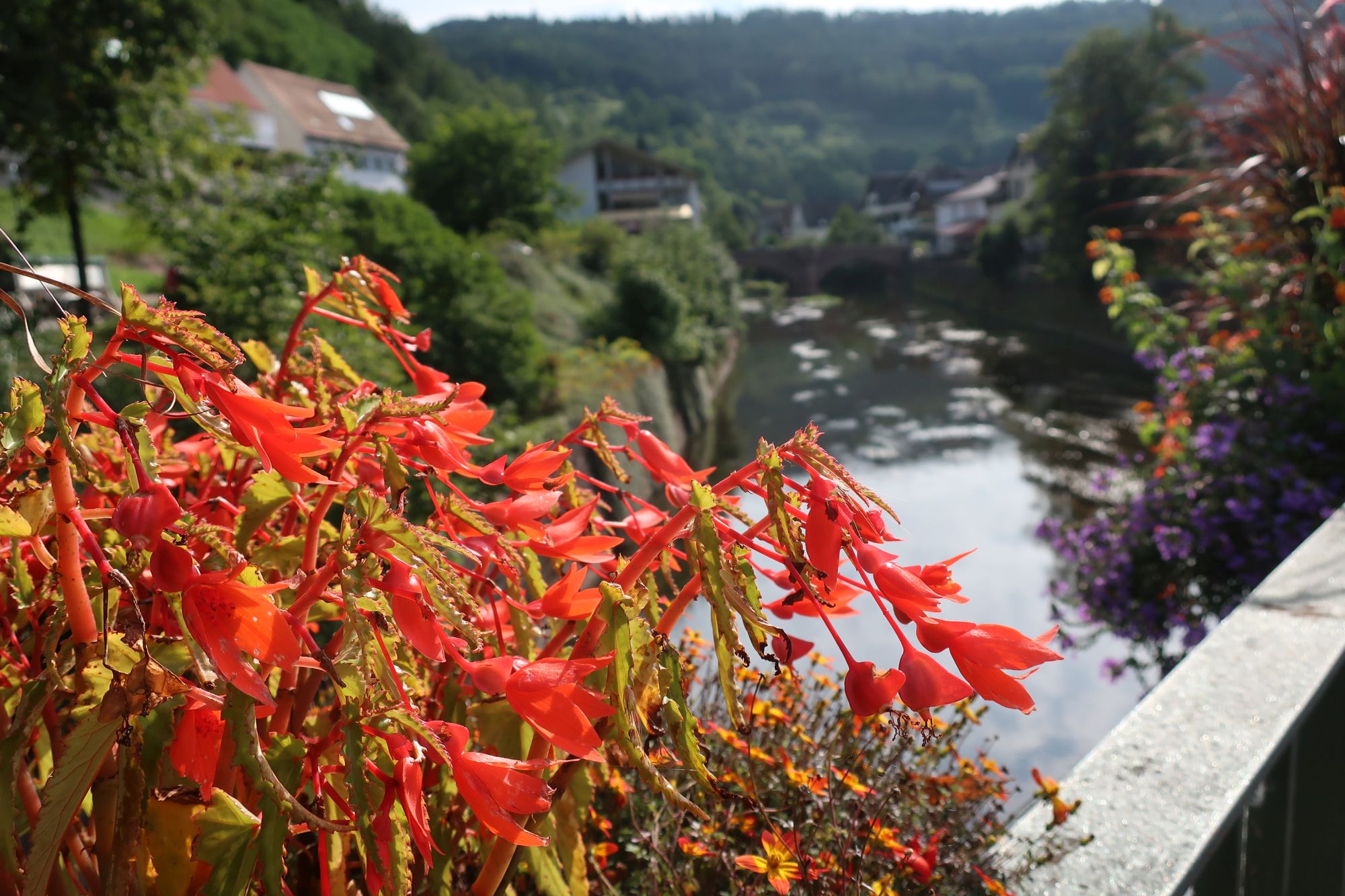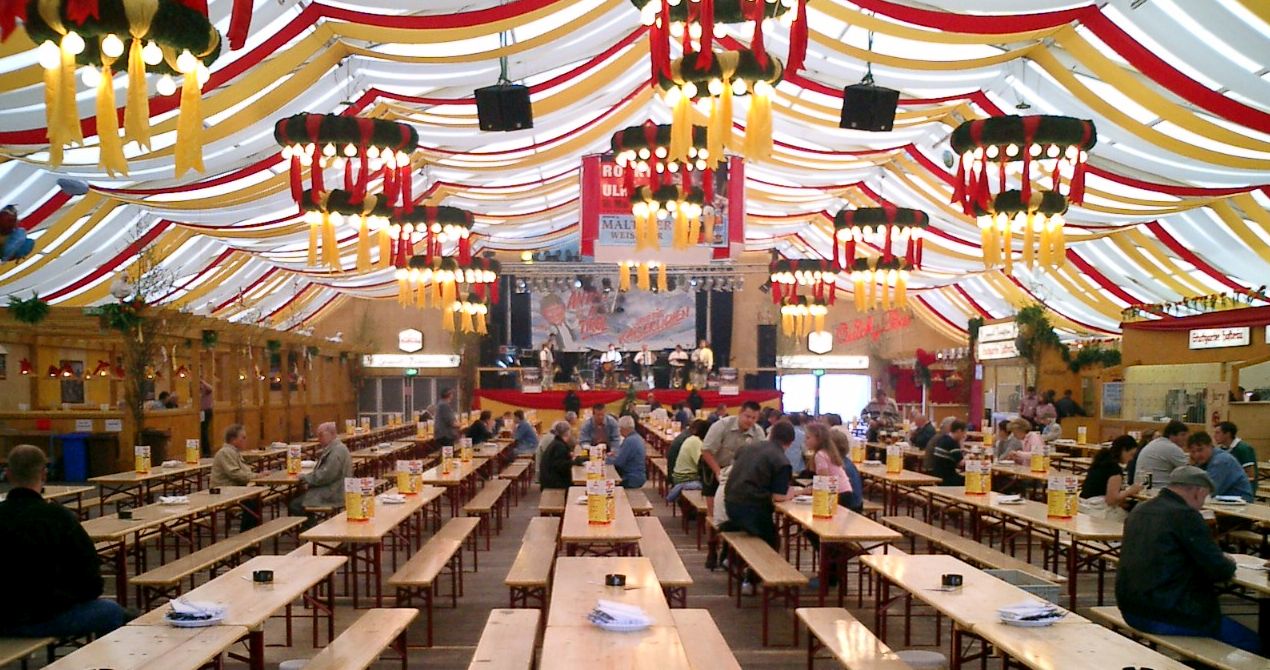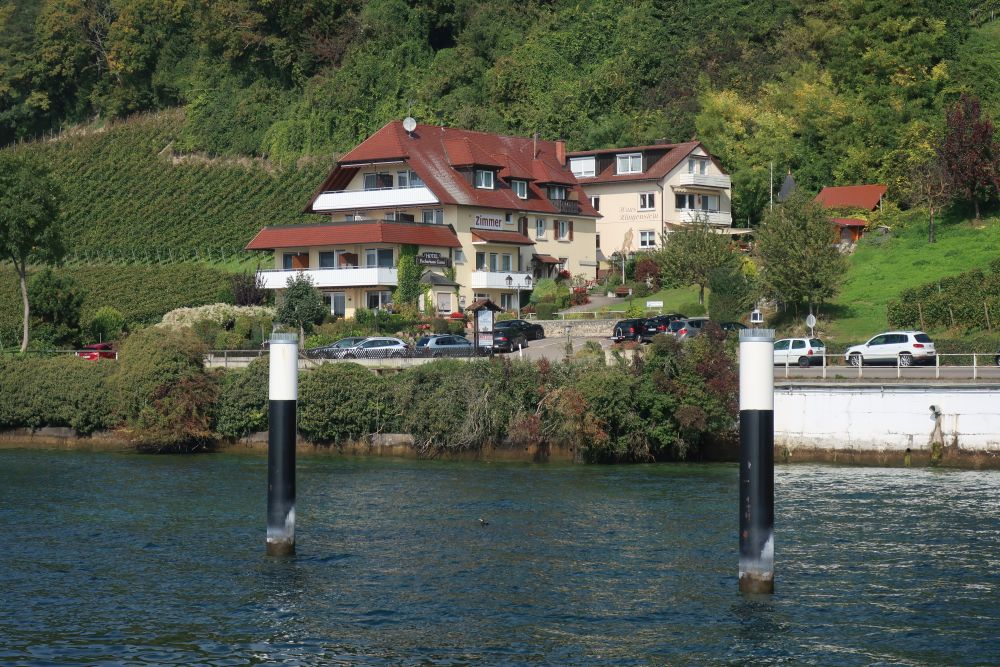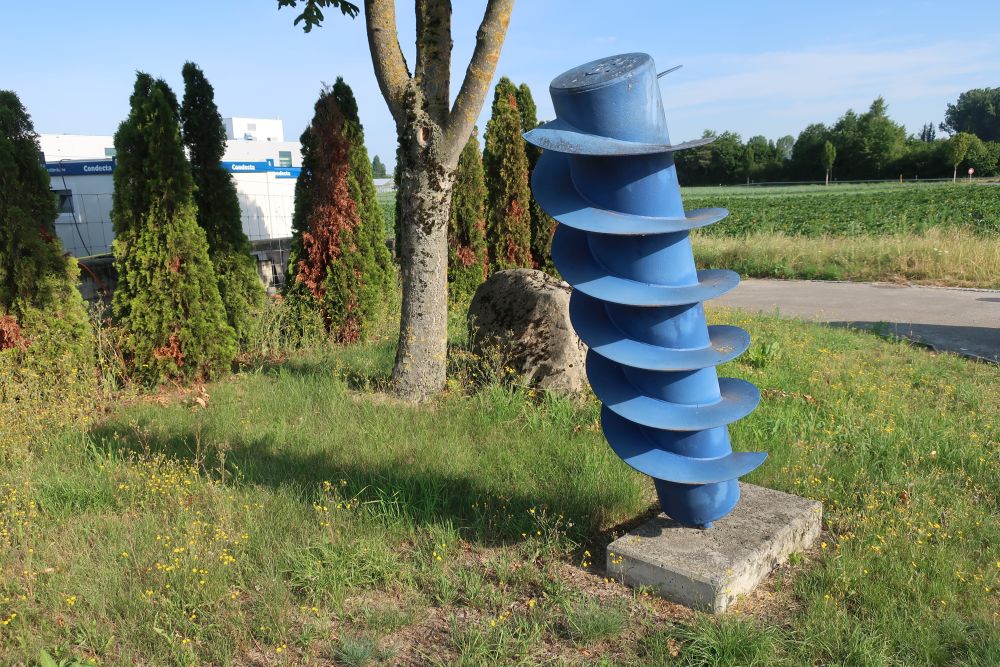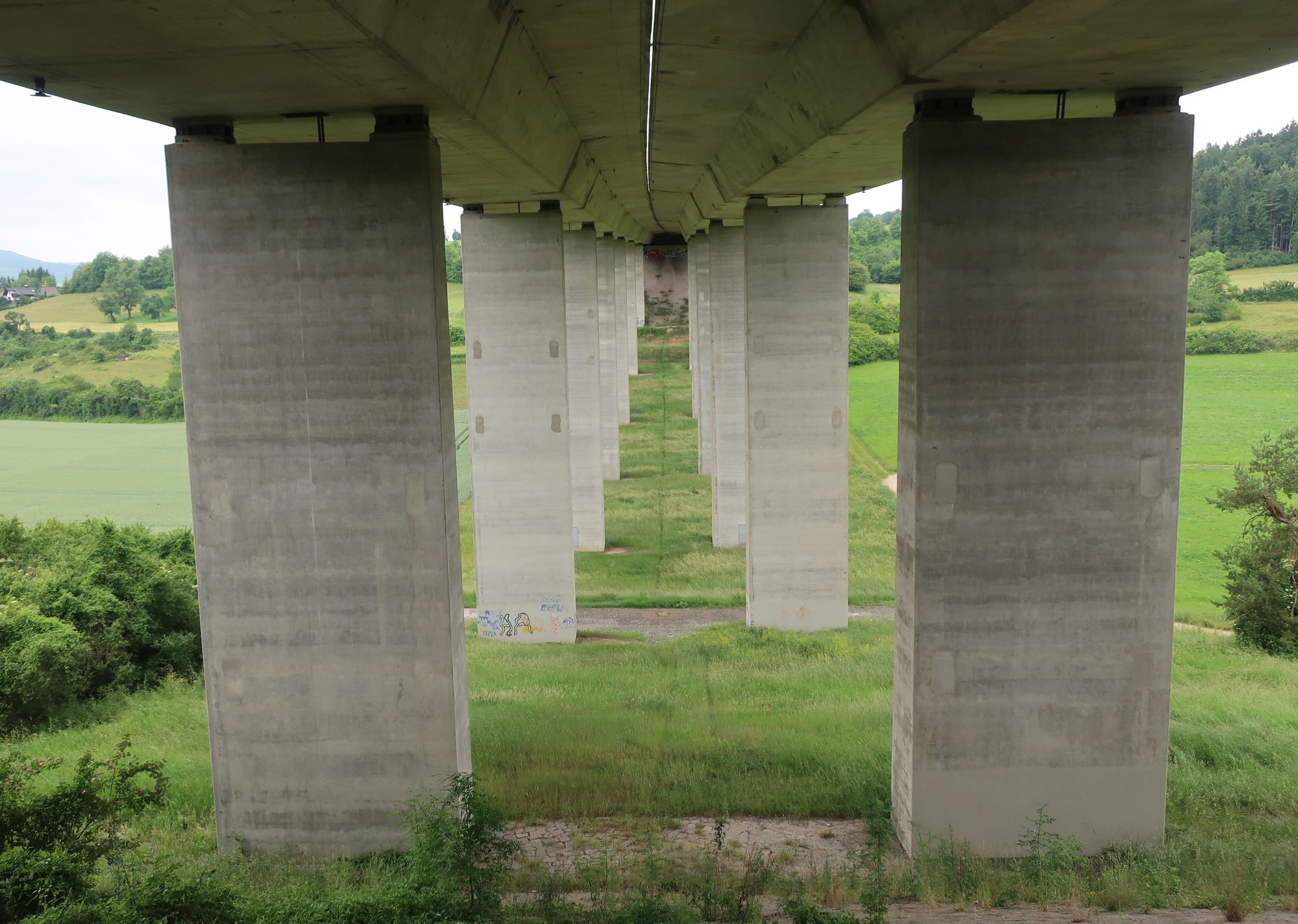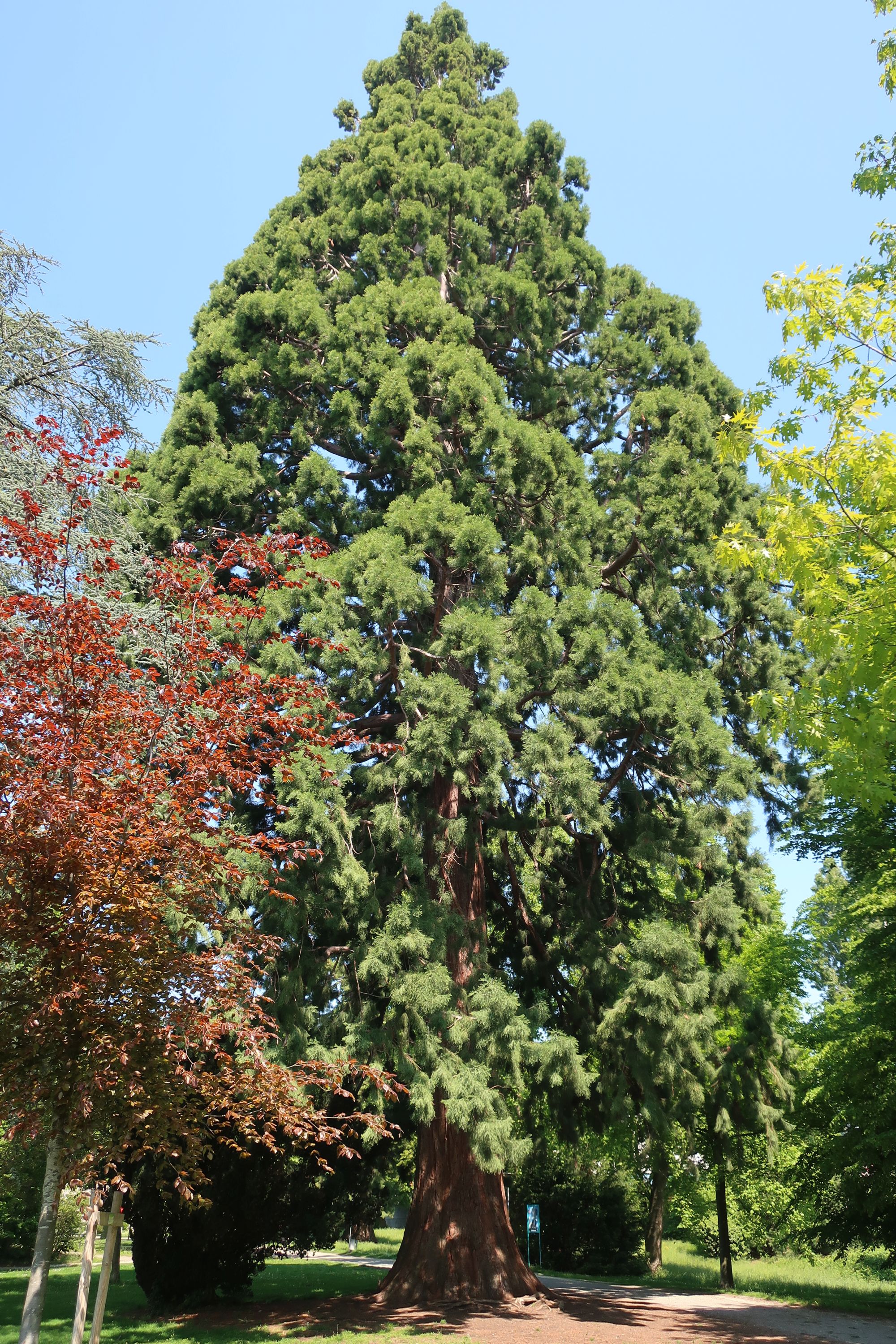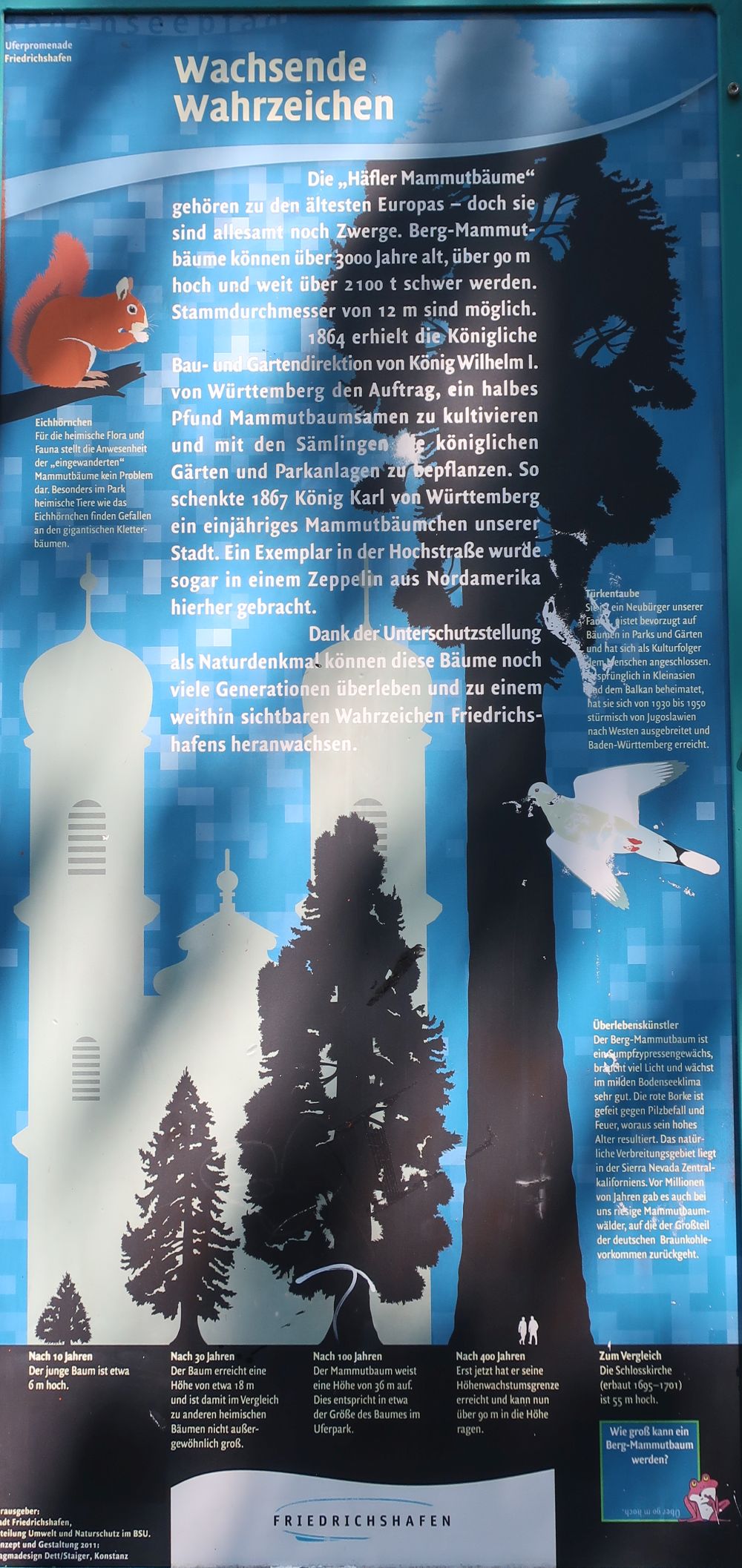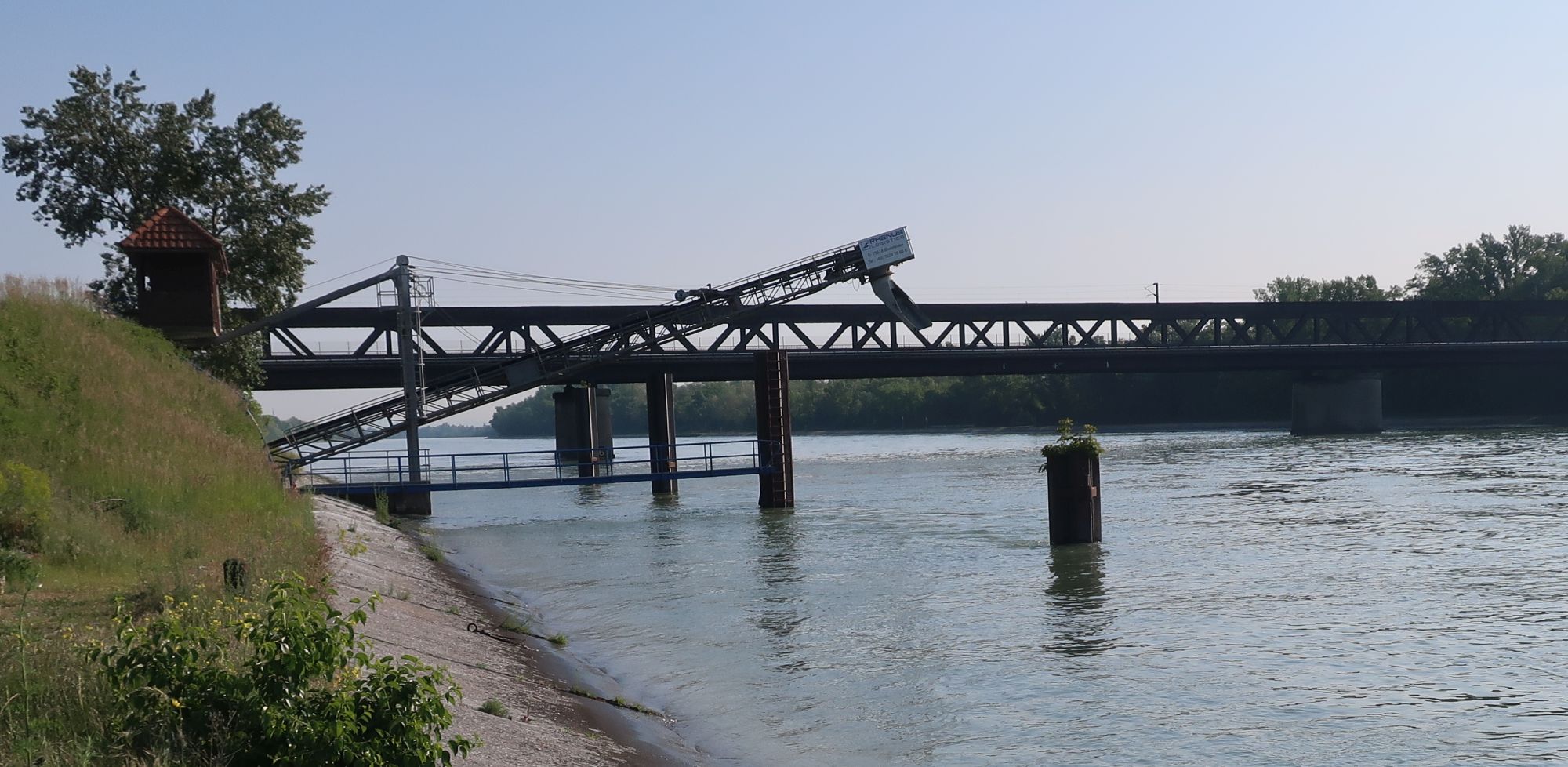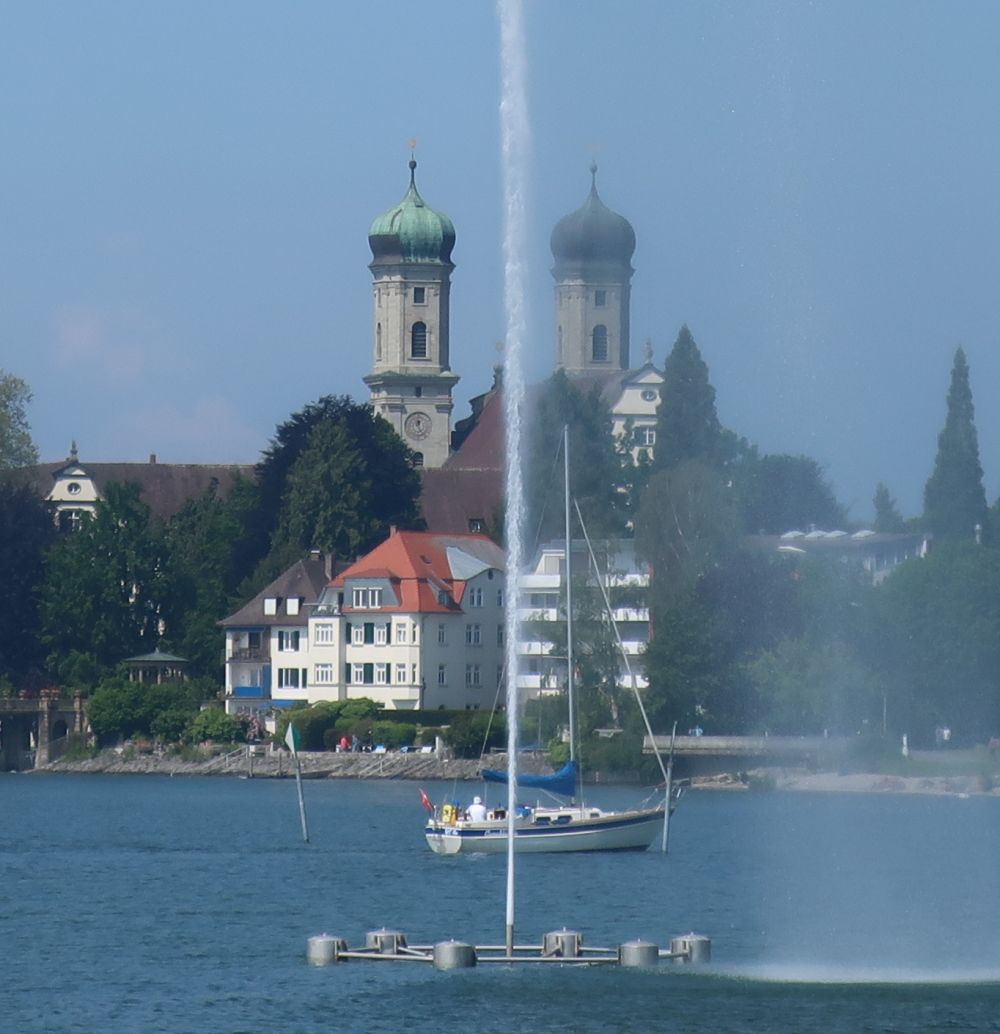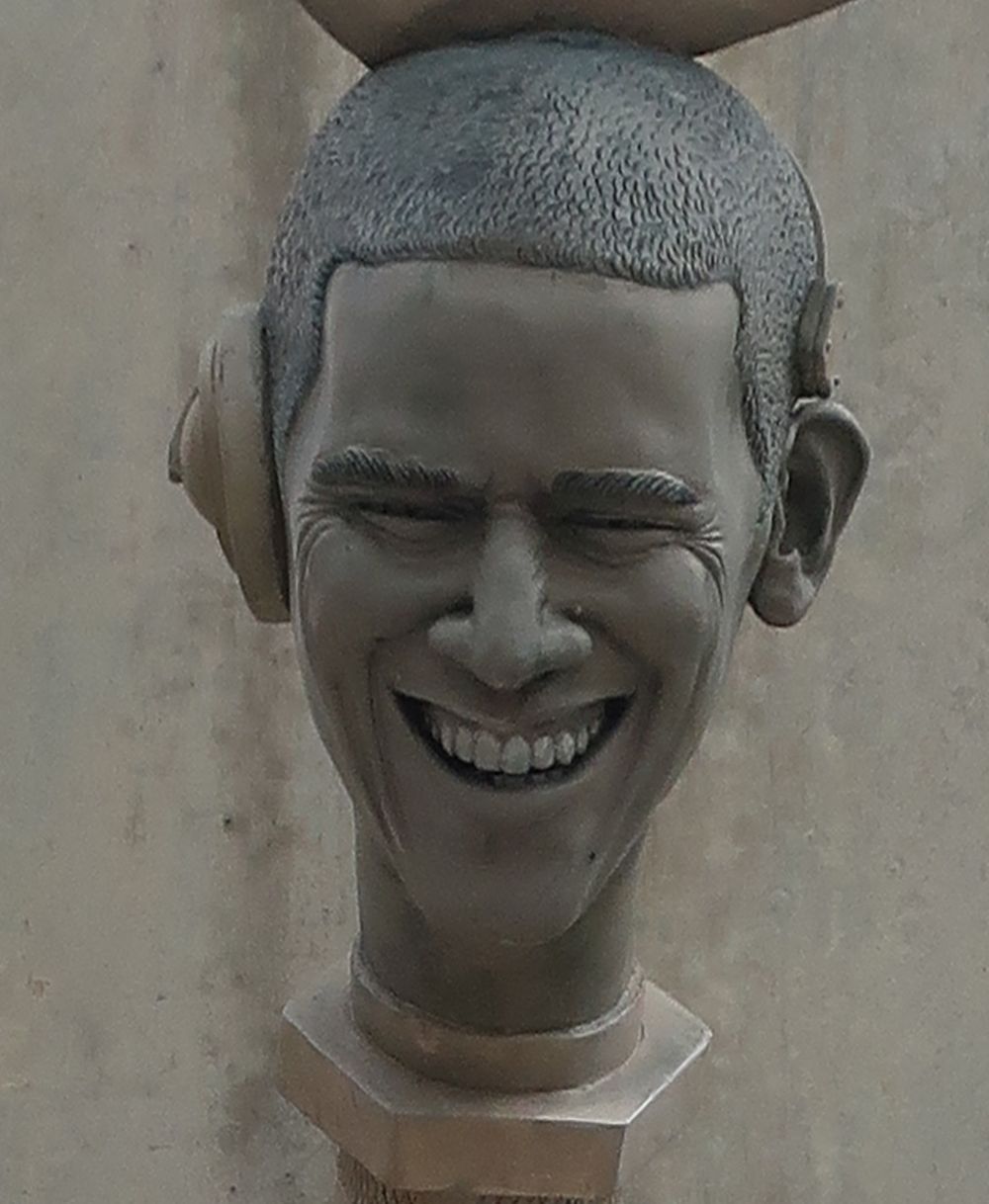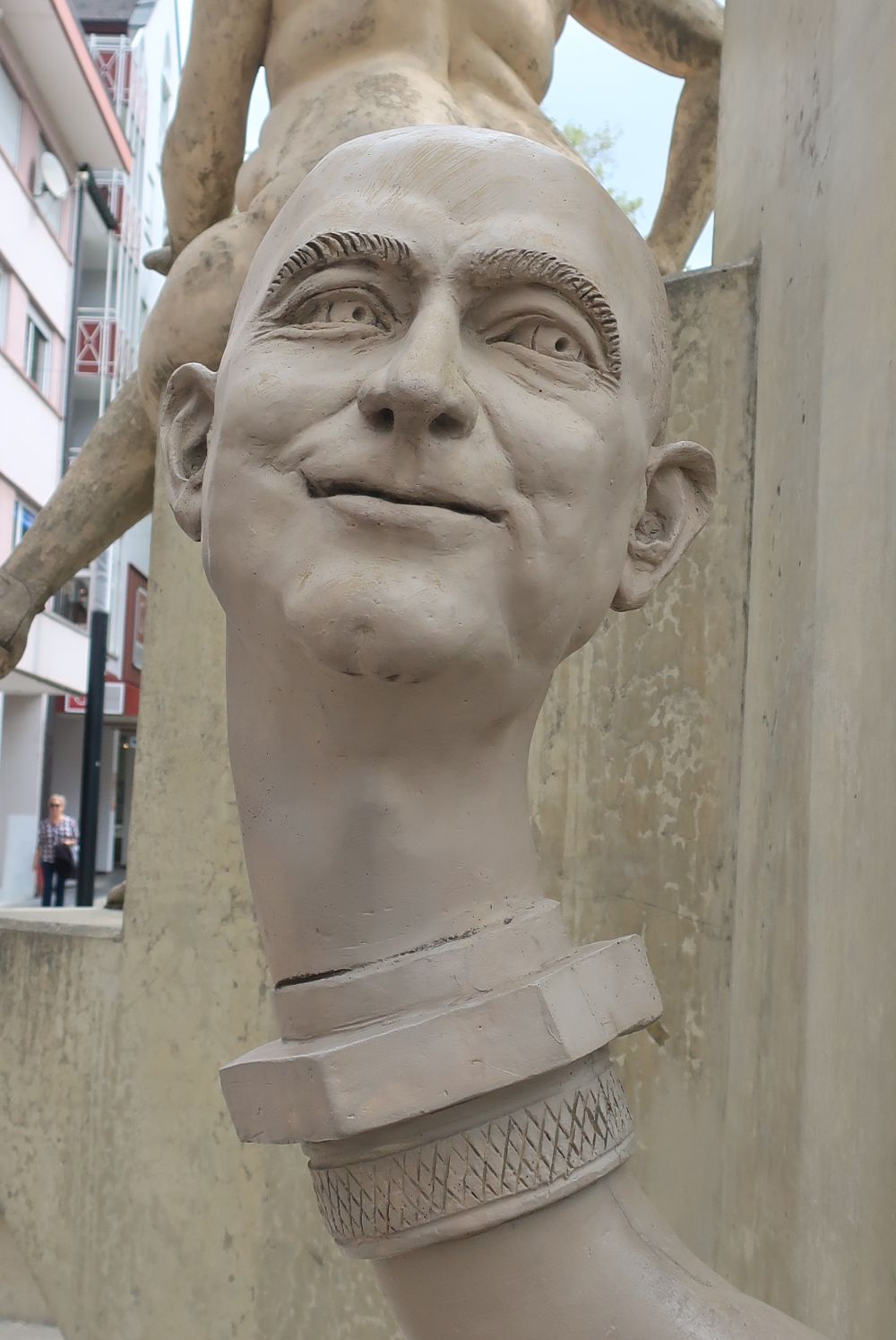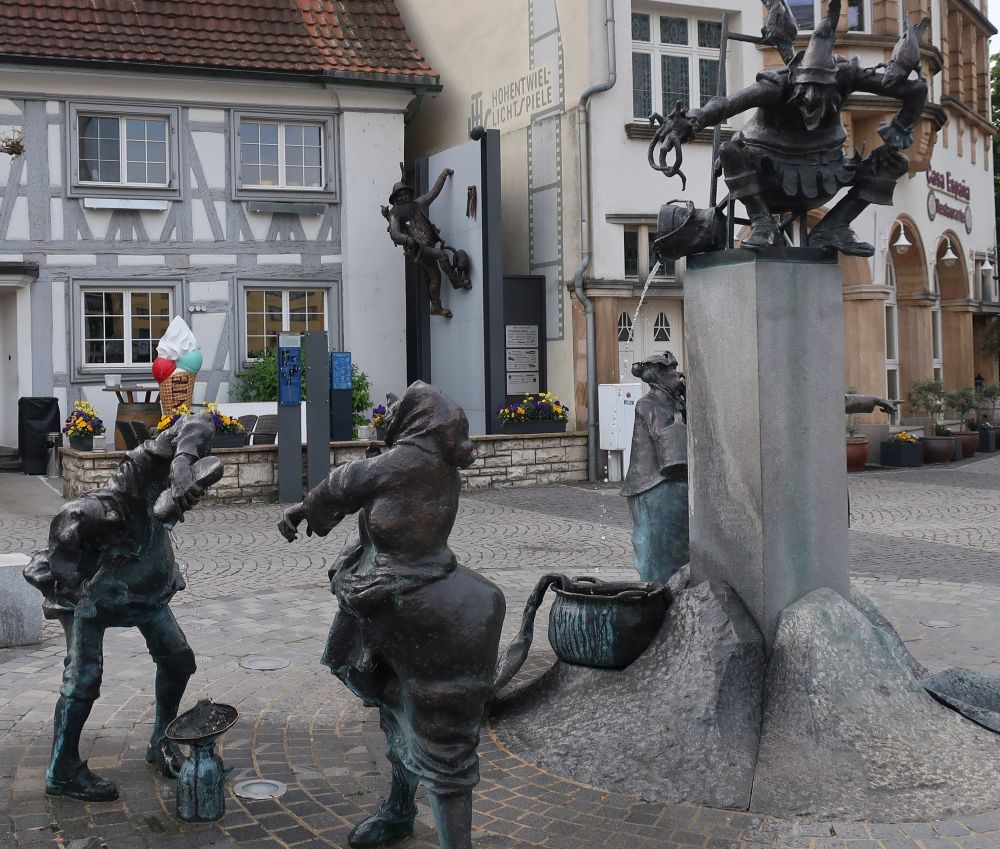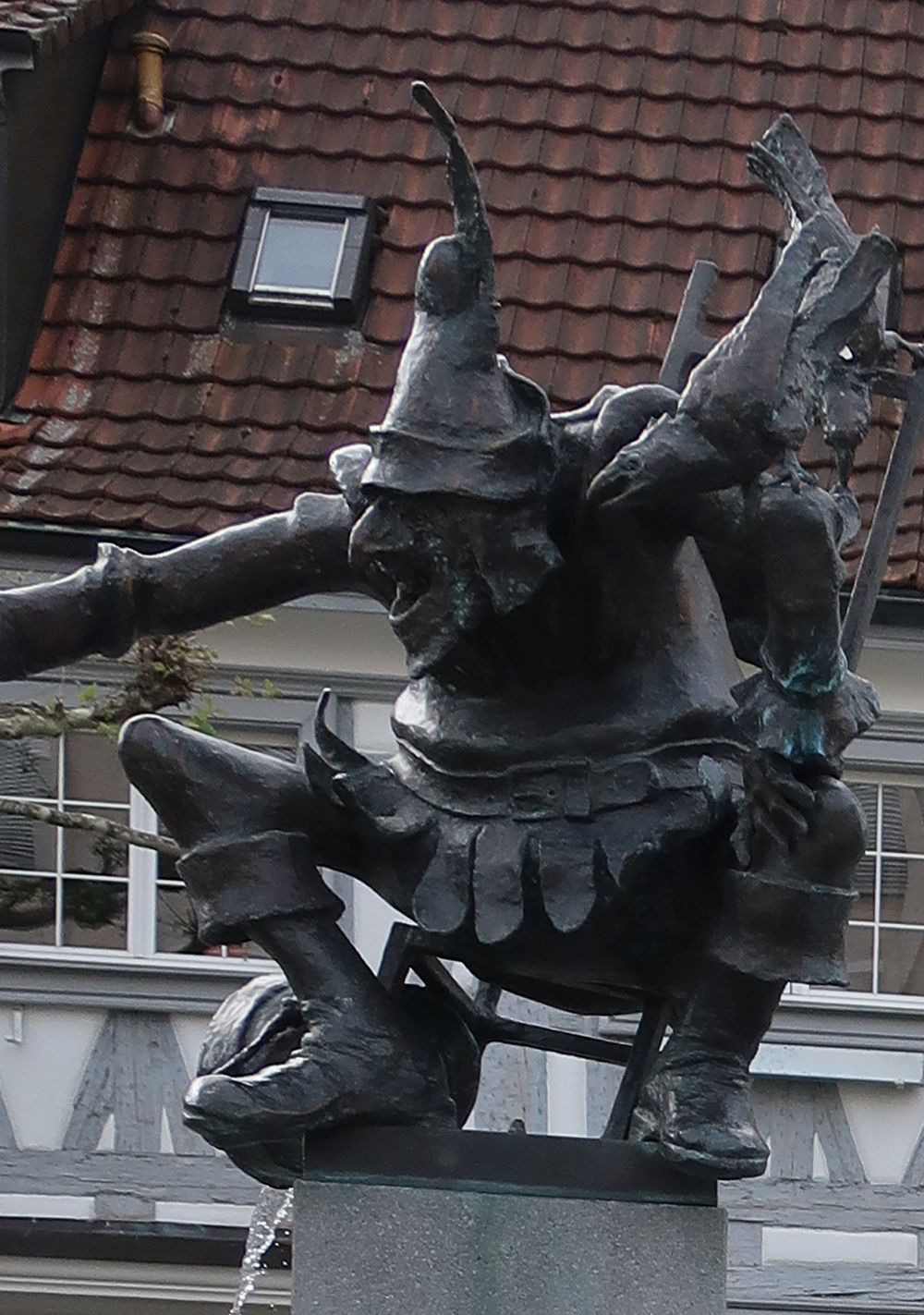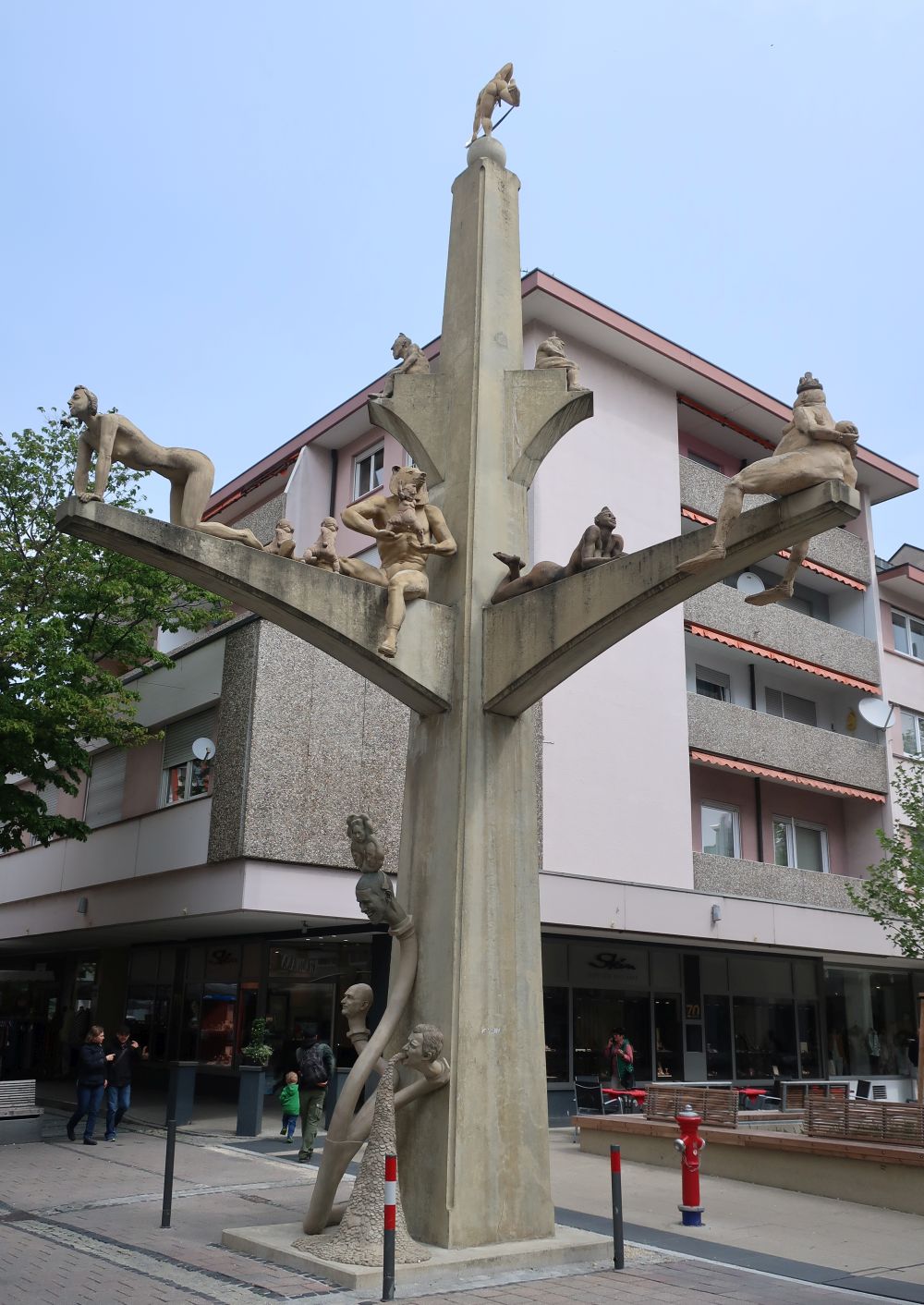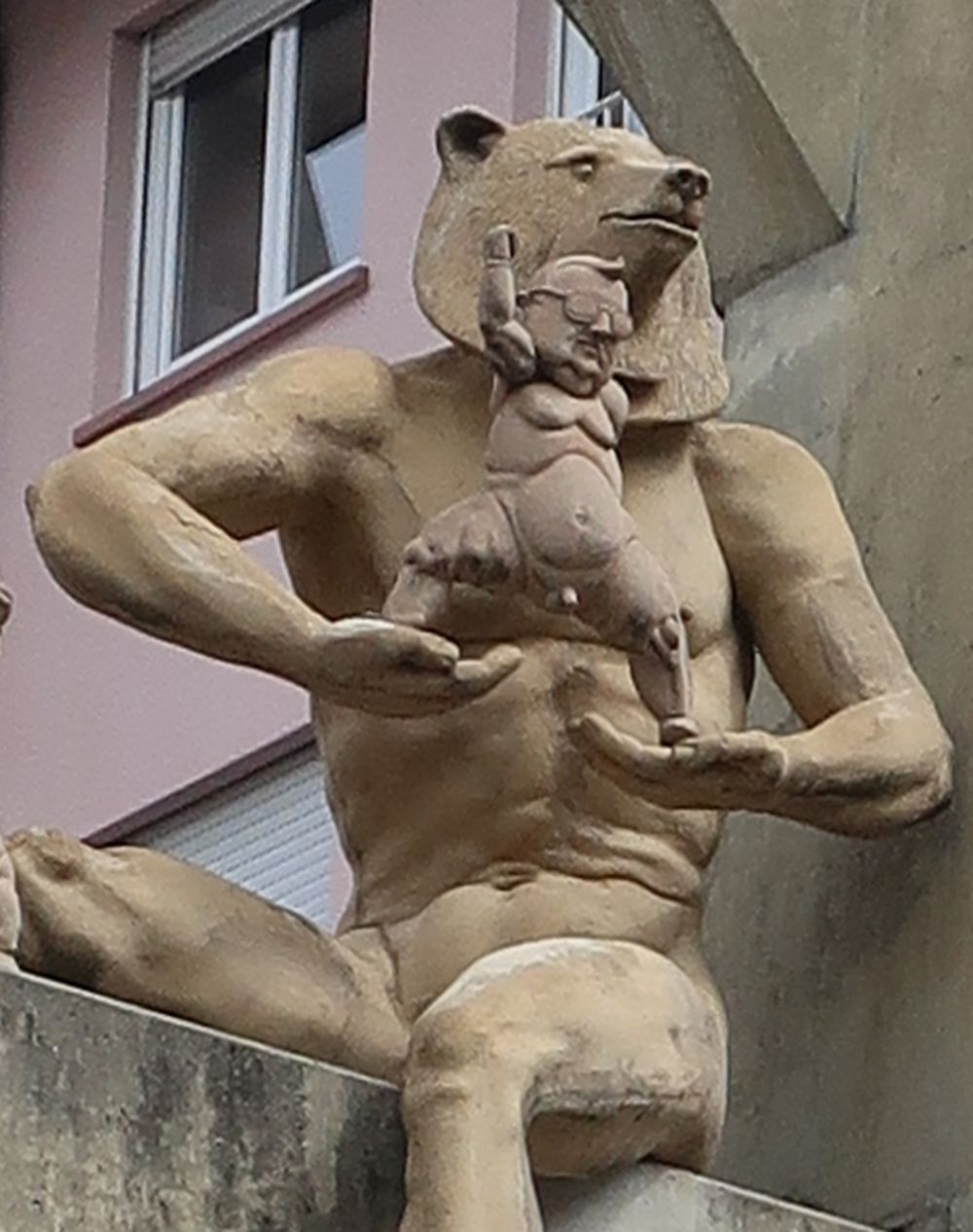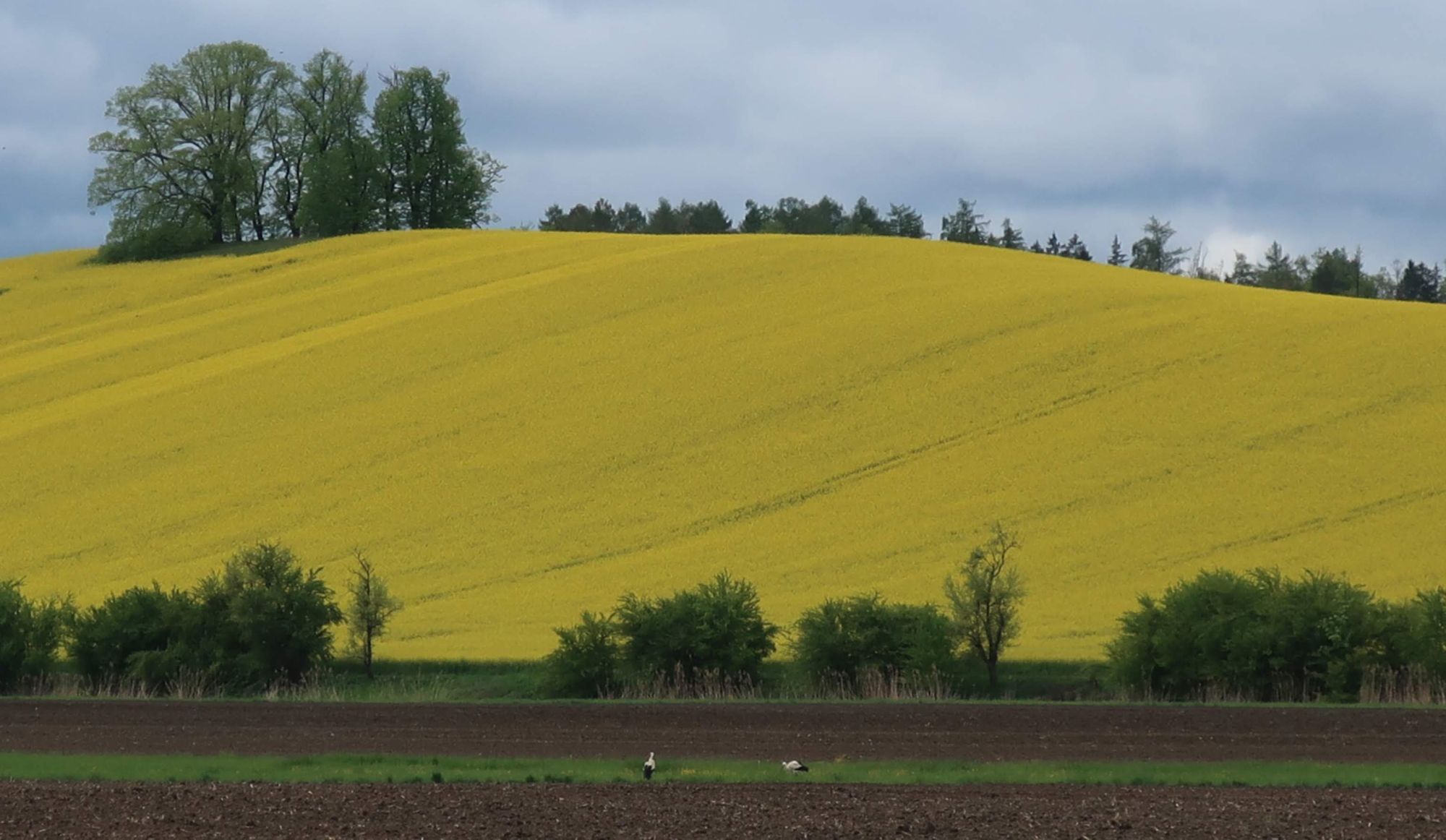Just like it’s brother the Globe, I spotted this in the Southern German village of Stuttgart-Vaihingen,
Southern Germany
Bearded guy on a horse
Extreme danger in the Schwabian Biosphere Reserve
The Schwabian Biosphere Reserve is an amazing, amazing place of nature, where you can talk long walks and enjoy the trees and the flowers and the birds.
And occasionally have a panic attack, such as coming across something that looks like this:
The hidden sign catches your attention, so you move a bit closer and see this:
In German the text reads: Lebensgefahr! Absolutes Betretungsverbot. . . which is roughly translated as “Life threatening danger! Tresspassing is absolutely forbidden! This complete area is forbidden due to its previous use with munitions.”
Friedrichshafen promenade
Volcano castle
OK, at least in English it’s not a volcano but rather what remains of the magma chamber, known as a butte. And I would not go so far as to say it is a castle – more of a fort. But at any rate, it surprises many people to know that southern Germany is filled with great volcano fields, as this snap of Hohentwiel shows:
Mind-blowing Metal Sculpture from the mind-blowing Auto World
This is the mind blowing art that greets visitors as just before they enter the mind-blowing Auto World in Sindlefingen, Germany:
But what is Auto World, you may ask? It is a mind-blowing concept that is totally unique to Germany, and in upcoming blog posts I will be sharing more information about this!
Mind-blowing Metal Man from the mind-blowing Auto World
Breathtaking concrete lady on Lake Constance
From the artist that created many sculptures that adorn Southern Germany, in the city of Konstanz there is a big lady that stands and spins around, and she is made mostly out of concrete:
Actually, she turns around about one revolution per minute. I’ve never seen the motor and gears that make this happen.
Rhein cattails
Nagold tree – 3
Continuing the series, here is a nice tree next to the mighty Nagold River in Germany’s Schwarzwald:
The German words for river (Fluss) and creek (Bach) really confused me when I started to learn German.
I love Germany, so don’t misunderstand what I have to say, but Germany has no rivers like in any other country, such as the Nile or the Amazon or the Mississippi. The German equivalent of river, or Fluss, such as the Nagold River shown here, would be a creek in any other country. And the German equivalent of creek, Bach, would be such a tiny little stream it probably wouldn’t be named! In fact, German has one level below this: Bächle, which I guess in any other country would probably be referred to as a little puddle.
Nagold Flowers – 2
Continuing the series, here are more flowers adorning a bridge over the Nagold River in Germany’s Schwarzwald:
Nagold Flowers – 1
Bad Canstatter Volksfest
Although the Oktoberfest in München is by far more well known, the Bad Canstatter Volksfest in Germany has the unique charm that it’s almost as big as the Oktoberfest, but is attended only by the locals.
Here’s what I thought was a pretty snap of a beer hall I took early one afternoon:
Believe it or not, it is attended by several million Germans – real Germans, not tourists – and it is world’d second largest beer festival.
North shore of Lake Constance
Lake Constance – or the Bodensee, in German – is really a lopsided place. It separates Germany (in the north) from Switzerland (in the south). Because Germany generally lacks big lakes, the North Shore of the Bodensee has become a quite affluent area for Germans. But because Switzerland generally has spectacular lakes (and the Bodensee is not one of them), the South Shore of the Bodensee is not only undeveloped but in fact real estate here is comparatively inexpensive for Switzerland. Here is a view of the north coast:
Amazing Blue Auger
Bruderthal Brücke
These are the Venusfigurinen von Petersfells, historical works of art discovered in South Germany that date back to Ice Age times:
And this is the Bruderthal Bridge in southern Germany:
Technically speaking, it is not a bridge; it is a viaduct.
The Bruderthal, or Brother Valley, is an interesting place located in the heart of a region (Hegau) that is home to many dozens of extinct volcanoes. It is the home of the Eiszeitpark – or Ice Age Park. And it’s here where scientists in the early 20th century discovered the remains of a massive human settlement. When you consider that the glaciers of the Wurm ice age in this part of Europe were many kilometers thick, it is truly amazing that our human ancestors could eke out a living at all!
The amazing, incredible European Giant Sequoias – Bodensee
Giant Sequoia trees, which also have the amazing Latin name Sequoiadendron giganteum, are amazing amazing things. They can grow to hundreds of feet tall, weigh many thousands of tons, and live for many thousands of years. And what’s more amazing, there are quite a number of them that have been born and raised in Europe!
Here’s a Giant Sequoia that I spotted in Germany in a park next to Lake Constance, also known as the Bodensee.
But as this sign describes, planted in 1800’s it is still just a baby.
Sadly, I am a big believer that mankind will be unable to stop climate change, so I have no hope that this fellow will live to reach anywhere near its limits. Even the natural-born Giant Sequoias of Northern California are classified as an endangered species and are under massive threat due to the increased temperatures and reduced levels of rain and moisture in the air.
Rhein Crane
Continuing the series, I was never able to figure out of this old crane was primarily used for onloading or offloading barges on the Rhein River flowing between France and Germany:
Gothic Sail Spray
I waited quietly and patiently in the hot South German sun for that perfect opportunity, when three separate streams of fate briefly came together for an instance and then went again on their separate journey through life. But for just an instant in time, the Gothic Towers and the sailboat and the water spray were merged together as one:
Obamakopf on the Paradiesbaum
Recently I showed the stunning street sculpture entitled Paradise Tree, and this is a close of the head of Barack Obama s on said tree:
Bezoskopf on the Paradiesbaum
Recently I showed the stunning street sculpture entitled Paradise Tree, and this is a close of the head of Amazon’s Jeff Bezos on said tree:
The truly unbelievable “Jester Fountain”
I don’t travel to Northern Germany very much – so it’s hard for me to make comparison – but at least most of the Southern German towns and villages are filled with truly incredible works of art. Here is another stunning example from the town of Singen am Hohentwiel, the Narrenbrunnen:
Jesters, or Narren in German, have played a preeminent role in German culture for centuries – and in Southern German, they are celebrated every year in centuries old Pagan rituals such as Faschnacht. These are not just random characters thought up by the artist; in fact, each and every figure is a well-known Narre for the inhabitants of that village, kept alive in the yearly celebrations, complete with stories and a history rooted in true historical events and dating back centuries.
Very well known to the local inhabitants of the town of Singen, here is the Narrebolizei:
And here is the Poppele:
Since it is really these yearly Pagan celebrations that keep these Jesters alive, you can read more about them here.
The amazing, awe inspiring Paradise Tree of Mr. Lenk
Storks surfing the golden wave
Basel Badischer Bahnhof
The Swiss city of Basel is something of an international enigma, since it sits within walking distance to no less than two countries (France and Germany) and a confederation (Switzerland). Here you will find not one train station, but two: the Swiss main train station operated by my former employer, the Swiss Federal Railways; and the Basel Badischer Bahnhof, opened in 1855 and operated by the German Federal Railways.
